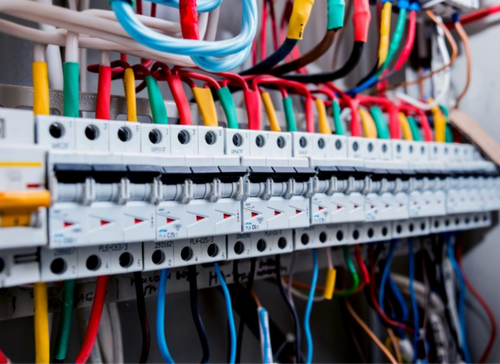Cutting-Edge Innovation with BRE Automation Australia Services
Demystifying Electric Installation: Recognizing Codes and Regulations for a Legal and Safe Setup
In the realm of electrical installment, adherence to codes and policies is vital to make certain both validity and security. The trip to debunking electric installation goes past plain knowledge with regulations; it demands an extensive understanding of just how to implement risk-free electrical practices effectively.
Importance of Electric Codes
The adherence to electric codes is crucial in ensuring the security and integrity of electric installments. Electric codes serve as a set of criteria and standards that determine the correct style, installment, and maintenance of electric systems. These codes are developed to lessen the danger of electrical dangers, fires, and other safety and security problems that might occur from faulty electrical work.

Furthermore, electrical codes are routinely updated to integrate brand-new modern technologies, finest techniques, and safety measures. Staying upgraded with these codes is vital for professionals in the electric sector to guarantee that their work meets the most recent safety standards. Eventually, the importance of electrical codes depends on creating a safe and efficient electric infrastructure that benefits both people and communities.
Secret Regulations for Safety
A number of basic policies control the safety criteria in electric installments. One vital policy is the National Electric Code (NEC), which offers guidelines for safe electric layout, installment, and evaluation to secure individuals and residential property from electrical risks. The NEC covers elements such as wiring methods, grounding, overcurrent security, and equipment installment to make sure a safe electrical system.
One more essential regulation is the Occupational Security and Health And Wellness Administration (OSHA) requirements, which concentrate on the security of employees involved in electric setups (BRE Services). OSHA regulations consist of requirements for correct training, security procedures, and individual protective tools to avoid office crashes and injuries
Moreover, the International Electrotechnical Compensation (IEC) requirements aim to harmonize electrical installation guidelines on a worldwide scale. These standards address issues like electrical devices security, electro-magnetic compatibility, and energy efficiency to advertise uniformity and safety in electric installations worldwide.
Compliance with these key laws is necessary to guarantee the safety and legitimacy of electric installments, safeguarding both people and home from the risks connected with electrical power.
Comprehending National Electric Code
Secret laws such as the National Electric Code (NEC) supply vital guidelines for secure electric design, setup, and evaluation to guarantee the protection of people and residential property from electric hazards. The NEC, likewise called NFPA 70, is a comprehensive set of requirements for electric setups that are upgraded every 3 years. It is established by the National Fire Security Organization he has a good point (NFPA) and is widely adopted across the United States.
The NEC covers numerous elements of electrical job, consisting of circuitry techniques, grounding, overcurrent protection, and equipment setup. It aims to safeguard people and property by dealing with possible dangers linked with electrical systems. Compliance with the NEC is commonly applied by regional authorities having territory (AHJs), such as building code officials and inspectors.
Understanding the NEC is critical for electrical contractors, developers, and examiners to make sure that installments fulfill the essential security needs. By adhering to the NEC guidelines, experts can assist prevent electric accidents and make certain the reliability of electrical systems in property, commercial, and commercial settings.

Compliance With Local Building Ordinance
Recognizing and sticking pop over to this web-site to local building codes is vital for making sure the safety and conformity of electrical setups within a particular territory. These codes detail specific demands for electrical installations, such as the type of wiring to be made use of, placement of electrical outlets, grounding methods, and load capabilities.
When it involves electrical setups, failing to adhere to neighborhood structure codes can lead to significant consequences. Non-compliant installations may position safety risks, boost the risk of electrical fires, and lead to expensive fines or lawful issues. Furthermore, insurance policy firms may reject to cover problems resulting from installments that do not fulfill regional building ordinance demands. Consequently, it is vital for electrical experts and service providers to remain informed around and strictly stick to the regional building regulations relevant to their tasks.
Ensuring Safe Electric Practices
Practicing strict adherence to established security procedures is essential in the field of electrical installations to alleviate potential risks and make certain the health of individuals and residential properties. Safety in electric job includes different elements, beginning with the correct training of employees associated with installment, maintenance, and repair service. It is important to adhere to manufacturer instructions carefully when managing electric elements and devices. Prior to beginning any work, it is crucial to carry out a complete danger evaluation to recognize prospective risks and implement safety nets. Making use of individual protective devices (PPE) such my company as protected gloves, safety glasses, and non-conductive shoes is non-negotiable to secure versus electrical shocks and arc flashes. Routine tools evaluations, screening, and maintenance schedules are essential to identify and remedy mistakes before they intensify right into safety dangers. Furthermore, adherence to correct lockout-tagout procedures throughout upkeep activities is essential to avoid unexpected energization of circuits. By focusing on safe practices, electrical setups can work effectively while decreasing the chance of accidents or damages.
Conclusion
Finally, adherence to electric codes and regulations is crucial for making sure the safety and security and legitimacy of electrical setups. Understanding the National Electric Code and compliance with local building regulations are crucial for a secure setup. By following these standards and exercising safe electrical techniques, individuals can prevent prospective dangers and make certain the proper functioning of their electric systems.